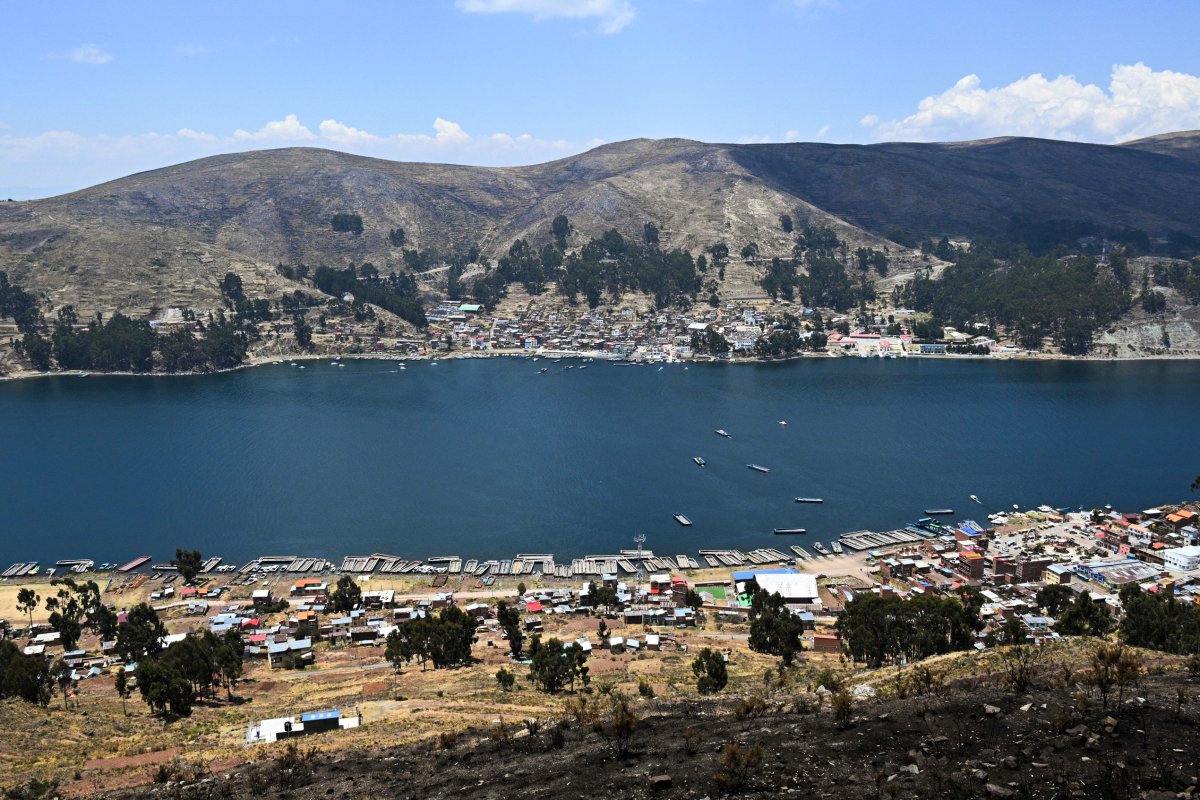A multi-year drought is threatening South America's largest freshwater lake.
Weather patterns and natural disasters have had severe global impacts this year. Wildfires have raged throughout Canada and Europe; a punishing heat wave has proven fatal in the U.S. Southwest; and devastating flash floods have inflicted destruction in Montpelier, Vermont, following torrential rain earlier this month. Much of the drought plaguing the U.S., meanwhile, has started to ebb and a wet winter has supplemented the water levels at Lake Mead and Lake Powell, but drought is still wreaking havoc on one lake across the world.
Drastically low water levels at Lake Titicaca on the Bolivia-Peru border have triggered an alert from the National Service of Naval Hydrography, according to the Associated Press. Last week, water levels fell .8 inches below the lake's drought warning stage, but locals have been experiencing the effects of the drought for years.

Indigenous Aymara communities that rely on the lake have grown increasingly worried as the drought takes hold. Fishing is not nearly as prosperous. Large swaths of land sit where water used to be, and sunken boats previously submerged by water are now exposed and shipwrecked on dry land. The drought threatens the plants growing near the lake that feed livestock, and the tourism industry is expected to take a hit as less people visit the lake because of the drought's effects.
In a span of three months, the water level has plummeted by nearly 12 inches, and the pattern is expected to continue. Bolivia's navy cautioned that the lake's levels could fall more than 25 inches below the drought alert level by December, according to the Associated Press report. If the lake falls that low, it will shatter the low-water record set in 1998 by 13 inches.
As global weather patterns grow more severe, experts are concerned that climate change could play a part in worsening the impacts.
World Weather Attribution released a study in February that claimed South America's multi-year drought was caused by a longer-than-average La Niña—in which strong trade winds cause the Pacific Ocean to cool. The most recent La Niña spanned three years before ending in the spring.
During La Niña, trade winds blow strongly to the west. The climate phenomenon causes less rainfall than normal for South America, which can lead to droughts.
And although climate change isn't directly causing the drought in South America, experts argue that global warming is worsening the drought's impacts. Heightened temperatures can influence evaporation rates and cause soil to dry out faster, exacerbating the drought.
"We can expect the kinds of conditions experiencing now to continue to intensify in the future as global warming continues," Noah Diffenbaugh, a professor at Stanford's Doerr School of Sustainability, told Newsweek last week.
Newsweek reached out to AccuWeather via email on Monday for comment.
Uncommon Knowledge
Newsweek is committed to challenging conventional wisdom and finding connections in the search for common ground.
Newsweek is committed to challenging conventional wisdom and finding connections in the search for common ground.
About the writer
Anna Skinner is a Newsweek senior reporter based in Indianapolis. Her focus is reporting on the climate, environment and weather ... Read more
To read how Newsweek uses AI as a newsroom tool, Click here.








